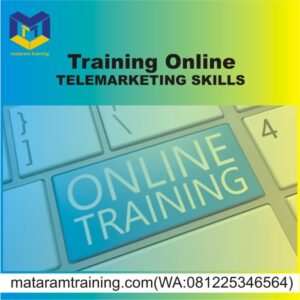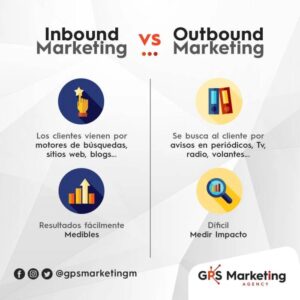
<pDiving into media relations strategy reveals how vital it is for organizations to build strong connections with the media. In today's fast-paced information landscape, effective media relations can shape public perception and enhance brand visibility. This strategy focuses on storytelling, leveraging market research, and utilizing essential tools to create engaging narratives that resonate with audiences.
<pBy understanding the core components, such as the importance of press releases and audience analysis, businesses can align their messaging with market trends and consumer behavior. The right strategies ensure that stories not only reach the intended audience but also leave a lasting impact.
Understanding Media Relations Strategy

An effective media relations strategy is crucial for organizations seeking to build and maintain a positive public image. It encompasses various components that work together to establish strong relationships with media outlets and ensure that the organization’s message is communicated effectively. This approach not only enhances visibility but also fosters trust and credibility with the target audience.
An effective media relations strategy includes several key components, such as identifying target media, developing a message, and engaging with journalists. Understanding these elements can significantly improve interaction with the press and maximize the impact of communication efforts.
Components of an Effective Media Relations Strategy
The foundation of a successful media relations strategy lies in several critical components. Each element plays a role in ensuring that the organization’s narrative is conveyed clearly and effectively.
- Target Audience Identification: Knowing your audience is essential. Determine which media outlets cater to your key demographics and focus efforts there.
- Message Development: Craft compelling messages that resonate with both the media and the audience. Ensure that messaging aligns with organizational goals and core values.
- Media Outreach: Build relationships with journalists and editors. Personalize your outreach efforts to increase the likelihood of coverage.
- Monitoring and Evaluation: Track media coverage and analyze the effectiveness of your strategy. Use insights to adapt and refine future media interactions.
Importance of Storytelling in Media Relations
Storytelling is a powerful tool in media relations that can capture the attention of journalists and audiences alike. An engaging narrative can transform mundane facts into compelling stories that resonate on a personal level.
“A good story can engage the audience, making them more likely to remember and share your message.”
Using storytelling in media relations can help organizations illustrate their brand values, mission, and impact. It creates an emotional connection that not only informs but also inspires. For example, a nonprofit organization sharing a success story about an individual whose life was changed through their programs can evoke empathy and encourage support.
Role of Press Releases in Media Relations Efforts
Press releases are a fundamental element of media relations efforts, serving as a direct line of communication between an organization and the media. They announce newsworthy events or updates and help shape public perception.
A well-crafted press release includes essential details such as the “who, what, when, where, and why,” presented in a clear and engaging format. It is vital for ensuring that journalists have all the necessary information to cover the story accurately.
“Press releases are not just documents; they are the voice of your organization to the outside world.”
The impact of a press release can be amplified through strategic distribution, targeting relevant media outlets that align with the organization’s goals. For instance, announcing a major partnership with a well-known brand can generate buzz and increase visibility across various platforms, leading to potential media coverage that enhances reputation and outreach.
Integrating Market Research into Media Relations
Incorporating market research into media relations strategies is pivotal for creating impactful communications that resonate with target audiences. By using data-driven insights, organizations can craft messages that are not only relevant but also timely, thereby enhancing engagement and fostering a positive public image.
Effective media relations depend heavily on understanding the audience and market dynamics. Market research provides valuable insights into consumer preferences, behaviors, and trends, which can inform how to position messages and choose media channels. Here are key methods for leveraging market research in media relations strategies:
Utilizing Market Research for Media Relations
Understanding the methods to integrate market research into media relations helps in creating a solid foundation for communication strategies. Here are several approaches to consider:
- Surveys and Polls: Conducting surveys can offer immediate feedback on public opinion regarding specific topics or campaigns. By analyzing survey results, organizations can adjust their messaging to better align with audience sentiment.
- Focus Groups: Engaging with small groups of target audience members can uncover deeper insights and emotional reactions to proposed messages or campaigns. This qualitative data can help tailor communications to resonate more effectively.
- Social Media Analytics: Monitoring social media platforms allows organizations to track conversations, identify trending topics, and understand audience preferences. This information is crucial for crafting timely and relevant media content.
- Competitor Analysis: Studying competitors’ media strategies and market positioning can reveal best practices and gaps in the market. This data can inform how to differentiate messaging and capitalize on opportunities.
- Public Sentiment Analysis: Utilizing sentiment analysis tools enables organizations to gauge public opinion on a larger scale. Understanding how audiences feel about issues related to the brand can shape media relations efforts effectively.
Impact of Audience Analysis on Media Messaging
Audience analysis is essential when it comes to crafting effective media messages. Knowing who the audience is, what their interests include, and how they consume media can significantly influence the form and content of communications. Various factors come into play:
- Demographics: Information such as age, gender, income level, and education can help tailor messages to ensure they resonate with the intended audience.
- Psychographics: Understanding values, beliefs, and lifestyle choices allows organizations to craft messages that align with the audience’s identity and aspirations.
- Media Consumption Habits: Knowing where the audience spends their media time—be it social media, blogs, news outlets, or podcasts—can guide the selection of appropriate channels for message distribution.
Aligning Media Relations with Market Trends and Consumer Behavior
Aligning media relations with current market trends and consumer behavior ensures that communications remain relevant and impactful. Several strategies can enhance this alignment:
- Trend Monitoring: Staying updated on industry trends allows organizations to adapt their messaging strategies promptly, ensuring they address current issues or interests within the target market.
- Content Relevance: Crafting content that speaks to trending topics can significantly increase media interest and audience engagement. For instance, aligning a product launch with a recognized movement can create a synergistic effect.
- Data-Driven Storytelling: Utilizing data to tell compelling stories can capture media attention. Case studies that highlight consumer experiences or significant data points can provide a persuasive narrative that media outlets may find newsworthy.
- Feedback Loops: Establishing mechanisms for gathering feedback from media interactions helps organizations refine their strategies over time and stay in tune with consumer expectations.
Tools and Software for Effective Media Relations

In today’s fast-paced digital landscape, leveraging the right tools and software for media relations can make a significant difference in how effectively organizations connect with the media. The right technological solutions enhance outreach efforts, streamline communication, and ultimately help in building lasting relationships with journalists and influencers. Below, we explore various marketing software options, telemarketing tools, and dedicated public relations platforms that boost media relations strategies.
Marketing Software That Enhances Media Relations Efforts
A variety of marketing software solutions are available that can support and elevate media relations initiatives. These tools assist in managing contacts, monitoring media coverage, and optimizing outreach strategies. Here’s a list of essential marketing software:
- PR Newswire: A widely used platform for distributing press releases, it provides extensive media reach and analytics to track engagement.
- Cision: This tool offers a comprehensive media database that helps in finding and connecting with journalists as well as monitoring media mentions.
- Meltwater: It offers media intelligence solutions, combining media monitoring with social listening to analyze how brands are discussed online.
- Hootsuite: Primarily a social media management tool, it enables users to engage with journalists and influencers across various social platforms efficiently.
- BuzzSumo: This platform helps identify trending content and influential authors in your industry, making it easier to target relevant media for outreach.
Features of Telemarketing Software Supporting Media Outreach
Telemarketing software plays a crucial role in facilitating direct communication with relevant media contacts. The following features are particularly beneficial for media outreach:
- Caller ID and Call Routing: Ensures that calls are directed to the appropriate contacts, minimizing wait times and improving engagement chances.
- Call Recording: Allows organizations to review interactions with journalists, providing valuable insights into improving future communications.
- CRM Integration: Syncs with customer relationship management systems to manage and track relationships with media contacts more effectively.
- Scripted Outreaches: Telemarketing software often offers customizable scripts that can help guide conversations, ensuring key messages are delivered consistently.
- Analytics Reports: Provides data on call success rates, enabling teams to adjust strategies based on what works best in engaging with media representatives.
Public Relations Tools for Streamlining Communication
Public relations tools are essential for creating a seamless communication process with the media. These platforms enable PR teams to craft, distribute, and track press materials efficiently. The following aspects illustrate how they enhance media communication:
- Press Release Distribution: Tools like PRWeb and Business Wire allow for wide-reaching distribution of press releases to targeted media lists, ensuring the right journalists receive your news.
- Media Monitoring: Tools such as Mention and Google Alerts help track media coverage in real-time, allowing organizations to gauge how their stories are being received and shared.
- Collaboration Features: Many PR tools offer collaborative spaces where team members can work together on drafts, share feedback, and create communication campaigns collectively.
- Campaign Tracking: These tools often include features to track the effectiveness of outreach campaigns, providing metrics on opens, shares, and overall media engagement.
- Brand Sentiment Analysis: Advanced PR platforms can analyze sentiment from media coverage, helping organizations understand public perception and adjust messaging accordingly.
Effective media relations rely on the right mix of technology, strategy, and communication. By integrating the right tools, organizations can enhance their outreach efforts and strengthen their relationships with the media.
Epilogue
<pIn conclusion, a well-crafted media relations strategy is more than just communication; it's about forging relationships that can drive success. By integrating market insights and using effective tools, organizations can enhance their outreach and storytelling capabilities. Ultimately, the goal is to create a dialogue that fosters trust and engagement between brands and their audiences.
FAQ Overview
What is a media relations strategy?
A media relations strategy is a plan designed to communicate effectively with the media, building relationships that help promote an organization’s message and brand.
How does storytelling benefit media relations?
Storytelling enhances media relations by creating relatable and engaging narratives that capture the audience’s attention and evoke emotional responses.
What role do press releases play?
Press releases serve as official statements that provide journalists with timely information about newsworthy events or updates related to an organization.
How can market research inform media relations?
Market research helps identify target audiences and their preferences, allowing for tailored messaging that resonates and engages effectively.
What tools can enhance media relations efforts?
Tools such as media monitoring software, press release distribution services, and CRM systems can streamline communication and improve outreach strategies.





